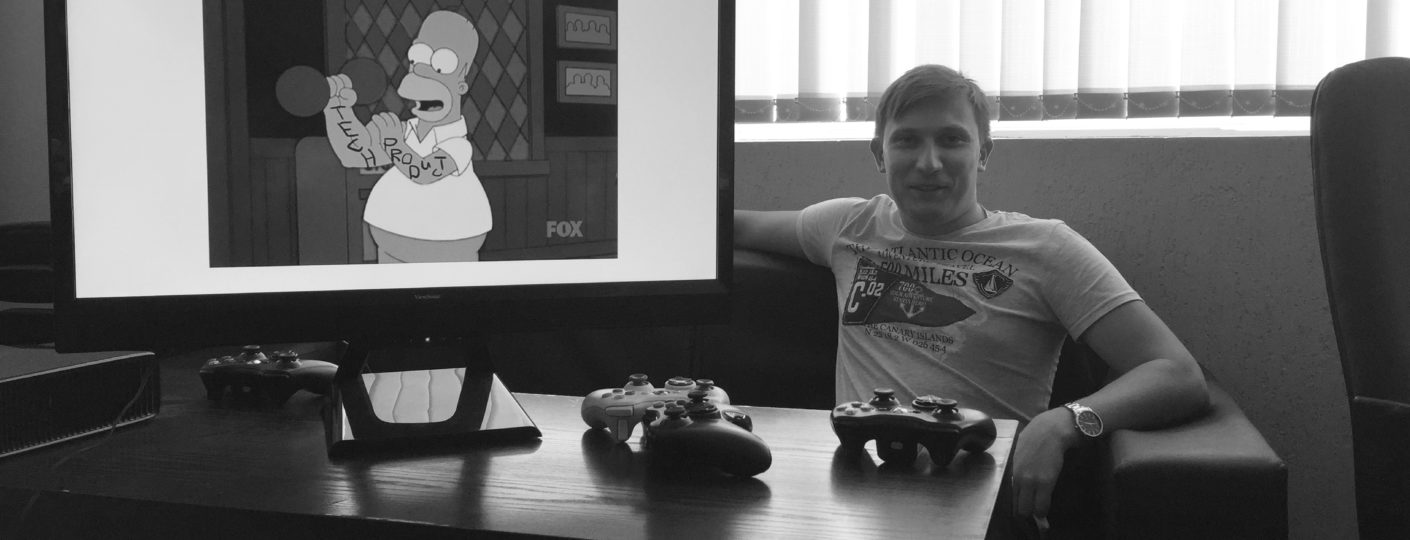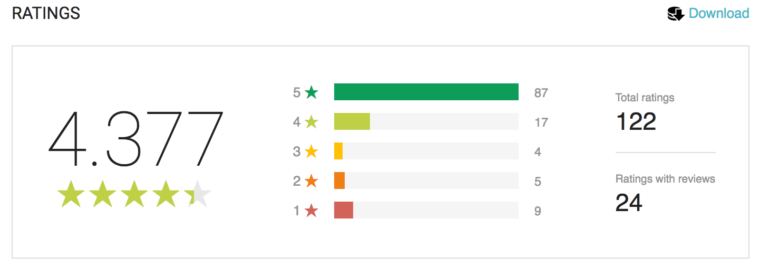
During my career as a developer, and later as a CEO of my own company, I have seen good and bad strategies, incredible marketing tricks, and decisions that killed startups. But as a service provider, we often don’t have much influence on the client’s decisions and overall product strategy. So I was dreaming of our own product for a long time.
At datarockets, we have developed many cool products for our awesome clients and partners: CRM systems, news portals, ERP systems, CPA networks, mobile apps for nightclubs, and unique products for startups that are going to change the world.
During the last year, I’ve read a number of books about management, marketing, modern development processes, leadership, negotiation, and investing, as I am trying to improve my product development skills. We motivate our developers to do the same – not just focus on coding. That’s why we position ourselves as a product development team, not just an outsource development resource. On the photo above, I’m telling the team how important it is to improve product development skills at one of our weekly meetups.
On our team, we have a Trello board where we record our ideas of products and discuss them. It so happened one day someone created a card with an idea to implement a password storage that might be comfortable for teams to use. At that moment, there were a couple of similar apps for personal password management but no alternatives for teams.
In development, we often need to share credentials for third-party services, ssh keys, and license keys for every project. So we decided to build a simple app to automate that process. We called it
YAPS (Yet Another Password Storage) – Don’t ask me why. I don’t remember 🙂
We described our idea and allocated three developers to work on the project.
After 2.5 months of development, we got the first version of the product. It was not what we wanted and the app had a bunch of bugs and was not comfortable to use at all. But at that moment, we had a bigger issue: we spent more money than expected.
Regardless of the poor results and budget issues, a popular company released a new product – 1Password for teams.
It was much better than our solution, and 1Password had a much bigger budget for development and marketing.
We decided just to switch to 1Password for teams and forget about our own product and consider our time and money investments as a good experience. BTW, we are still using 1Password I really like this product, and it covers all our needs and is very comfortable.
In hindsight, we made a lot of mistakes. I see them now and would like to share with you we paid a lot for this experience:
A year later, one of our skilled datarockers, Dima Chyrta, had two weeks between two projects, and we decided to use this delay carefully to build something small and useful. We are big fans of a popular card game Munchkin. We know that this game has millions of fans all around the world. The game is really cool, but it’s hard to track player levels and strengths. We previously tracked that info on paper as the rest of Munchkin players. So we decided to create a simple app to resolve this issue – Munchkin Level Counter.
This time, we knew much more than we did previously:
After two weeks, we had the first version and published it to Google Play for free. I wrote a couple of posts on our social networks, and that is how we got our first users. They provided quick feedback, and we made a couple of tweaks. After that, the app’s user base began growing:

We had 4.4 stars and 122 ratings on Google Play:

I’m excited every time we see new reviews, and we pay a lot of attention to them. We have implemented a couple of new features and made some changes per user requests:

One of the advantages of our product is that it is an open source code and is open for contributions. That is how we got a couple of improvements and translations to other languages. I want to thank Guillaume Husta, Niels van Asten and Christoph Schreyer for their contributions. You guys are awesome!
I’m not going to say it is a big success story or that we have built something that can change the world. We created a small product that helps Munchkin players, and we gained some small experience in our own product development. Here, I leave my notes, advice, and a list of useful books that helped us.
Contact our team for mobile app development, and let’s write your success story!
As I mentioned, I have read a bunch of books about product development and want to outline the two “must-read”:
Check out our newsletter